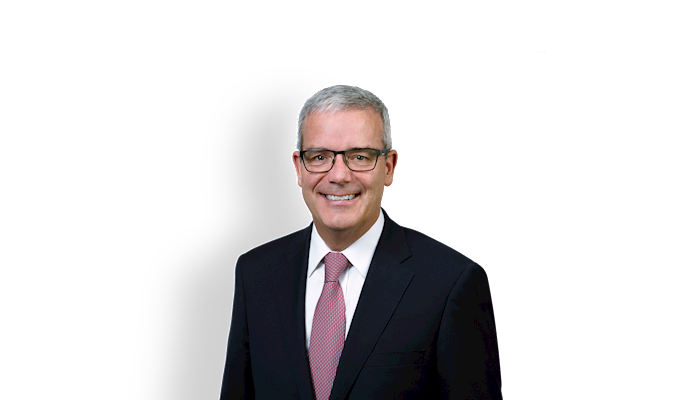Identifying material risk categories
We started our ESG assessment at a time when increased political engagement, particularly in the U.S., meant activists were holding companies legally accountable for ESG claims while other influential stakeholders, including investors, penalized companies for being “too woke.” In the context of such contradictions, we wanted to be strategic and deliberate in our approach. Balance was our guiding principle.
The ESG steering committee began the assessment process by identifying material risk categories relevant to a law firm using the Sustainalytics framework. Then Hive Advisory helped us identify key performance indicators to measure our progress to date.
Given our industry, it was clear that governance—encompassing board composition, disclosure, compliance, professional integrity, ethics, and all things technology—was most important, with almost half of our KPIs falling into this category. One-third of our KPIs were considered social, focusing on people management, community relations and pro bono work. Just under one-fifth were classified as environmental—including resource use and the disclosure, reporting and reduction of Scope 1 (direct) and Scope 2 (indirect) greenhouse gas emissions.

Making the grade
Once we settled on metrics, Hive Advisory measured our performance. They used best practices in ESG standards, including those from the Global Reporting Initiative, Sustainability Accounting Standards Board, Corporate Knights Best 50 Methodology, and Climate Disclosure Standard Board, as well as comparative research to similar-sized professional services organizations.
The result was an 89-page ESG baseline report that began with an overall maturity score and ended with a detailed examination of 120 KPIs in seven core areas of BLG’s operations.
“It’s hard to show your data to a third party and open yourself to critique,” says Hive Advisory’s CEO and managing partner, Stefan Piech. “We treated BLG like a public company—which is where we do the majority of our ESG and related work—and I commend the team at BLG for their commitment and openness to the discussions when the hard questions prompt reflection. There’s something to be said for those who can criticize themselves and improve. BLG wholeheartedly cares.”
Lessons learned
Our first ESG assessment, like all things done for the first time, was a learning experience. Here are six tips for other professional services firms doing an ESG assessment, taken from what went well for us and what we’d do differently next time.
#1 Do your homework.
Our consultant commended us for our rigorous work to identify the areas of material risk for a law firm; they plan to replicate this holistic approach in future engagements with professional services firms. Looking at publications from Sustainalytics, doing the materiality analysis and identifying our ESG categories before the assessment began created momentum before the consultants were involved and saved us time.
#2 Don’t forget ops.
Initially almost all the members of our ESG steering committee were partners of the firm, a decision that helped give the initiative credibility and strong sponsorship—two things our consultant agrees are critical to success. To create clear lines of communication, fill information gaps and ensure ESG was on their agenda, we quickly expanded the group to include representatives from the business side of the firm with responsibilities in each of the areas we were discussing.
#3 More isn’t always better.
We put in considerable effort to narrow the KPIs for each material risk category to only those that had the greatest relevance to our business. Having been through the process, we plan to reduce them further to truly focus on indicators that matter to a law firm and its clients.
#4 Collect data before the assessment begins.
Our carbon baseline assessment, conducted in 2022, helped us do much better on our greenhouse gas emission KPIs than if we hadn’t established a methodology for measurement and gathered data ahead of time. We asked our consultant to develop a tool we can use repeatedly in-house, an approach we’d also recommend to other firms doing this work.
#5 Be prepared for a deep data dive.
Because it was the first time we’d asked many of the questions posed by the assessment, data gathering was often onerous. We will streamline and systematize the process so decision-makers have the information they need to manage our risk factors without overburdening our staff.
#6 Think about your baseline assessment from the perspective of ROI.
Private companies that aren’t subject to mandatory ESG reporting may have difficulty convincing decision-makers that an assessment is important. Pitch the assessment as an investment that will demonstrate your organization’s strengths and a willingness to improve. For example, a company with proof of a strong governance framework, top-notch privacy and security and exemplary community relations will have an edge when it submits a proposal, enters discussions with a stakeholder group or engages in M&A discussions. An organization that takes an ESG assessment seriously will be at an advantage when it comes to recruitment and retention.











